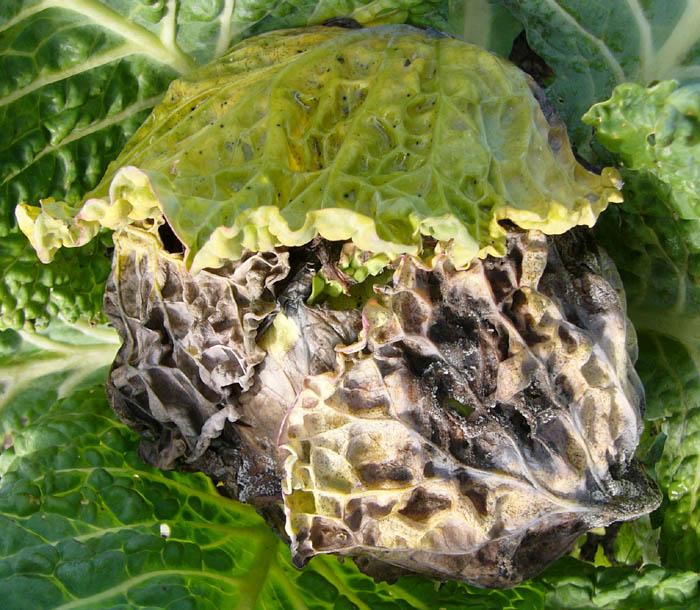
Downy mildew
Peronospora parasitica
What is Downy mildew (Peronospora parasitica)?
Hyaloperonospora parasitica, previously known as Peronospora parasitica, is indeed a species of oomycete that causes downy mildew in various plants, including members of the Brassicaceae family such as cabbage, broccoli, cauliflower, and radishes worldwide. It thrives in cool, humid conditions and can cause severe damage to plants during wet periods.
How does Downy mildew (Peronospora parasitica) occur?
Hyaloperonospora parasitica reproduces in two ways: asexual and sexual. In asexual reproduction, it creates tiny structures called sporangia that release spores capable of swimming through water to infect new plants. During sexual reproduction, special structures combine to form tough oospores that can survive in the soil or on plant remains. These different methods help Hyaloperonospora parasitica spread quickly and adapt to different environments, ensuring its survival and the continued infection of plants.
Symptoms
1 - Impact on Plants
• Downy mildew is a plant disease that results in leaf yellowing, browning, and stunted growth. Severe infections can cause defoliation and increased susceptibility to other pathogens. Periodic outbreaks with significant disease incidence and impact have been reported. • Flower head crops (e.g., broccoli, cauliflower) are most affected, leafy crops (e.g., cabbage) are moderately affected, and root crops (e.g., turnips) are least affected.
Solutions
1 - Before Planting
• Maintain weed-free nurseries, particularly those containing brassica family plants. • Water plants early in the day to minimize leaf wetness and reduce the opportunity for downy mildew spores to germinate and infect. • Avoid overcrowding seedlings to ensure adequate air circulation. • Inspect seedlings for downy mildew symptoms before transplanting. Remove and treat affected seedlings with a systemic fungicide.
2 - After Harvest
• Implement crop rotation by planting non-brassica species in subsequent seasons. • Dispose of crop residues by burning or burying them to reduce the survival of downy mildew pathogens.
3 - Chemical Control
• Fungicides can be used on seedlings. To enhance effectiveness, maintain low humidity and minimize leaf wetness. • Recommended fungicides include systemic metalaxyl and protectant options like mancozeb, copper-based fungicides, or chlorothalonil. • It is important to follow label instructions and use them responsibly and in accordance with local regulations.
